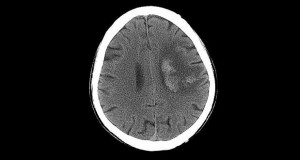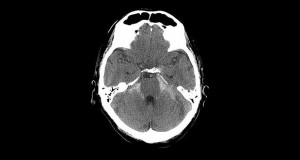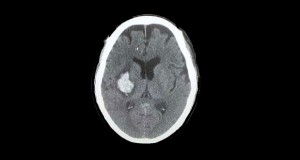Ischaemic stroke with haemorrhagic transformation, also known as haemorrhagic infarct, occurs in approximately one-third of cases of ischaemic stroke. Haemorrhagic infarct occurs more commonly in the elderly, those with larger infarcts as well as those having received thrombolytic therapy. The mechanism of haemorrhagic infarct has been ...
Read More »Epidural Haematomas
This is the non-contrast CT (Figure 1) of a patient with an acute right-sided epidural haematoma . The skull vault is a tight space and the haematoma is causing significant mass effect, resulting in mid-line shift (the right cerebral hemisphere is shifted to the left as it can be ...
Read More »Subdural Haematomas
Subdural haematomas are far more common than epidural haematomas and acute subdural haematomas are one of the leading causes of death and disability in patients with severe traumatic brain injury. Subdural haematomas are due to an accumulation of blood between the dura and arachnoid. This ...
Read More »Subarachnoid Haemorrhage
Subarachnoid haemorrhages are where there is an extravasation of blood into the space between the arachnoid and pia. Subarachnoid haemorrhages often develop as a result of rupture of a cerebral aneurysm (most often arising from the circle of Willis or the middle cerebral artery bifurcation) or consequent ...
Read More »Spontaneous Parenchymal Haemorrhage
There are a number of causes of spontaneous parenchymal haemorrhages. These include: hypertension, vascular malformations and aneurysms, neoplasm (primary or metastatic), cerebral amyloid angiopathy, use of antiplatelet agents or anti-coagulants, blood dyscrasias and drug abuse (e.g. amphetamine and cocaine use). Parenchymal haemorrhages could also be subdivided into ...
Read More » HKU E-learning Platform in Clinical Neurosciences HKU eLearning Platform in Clinical Neurosciences
HKU E-learning Platform in Clinical Neurosciences HKU eLearning Platform in Clinical Neurosciences





